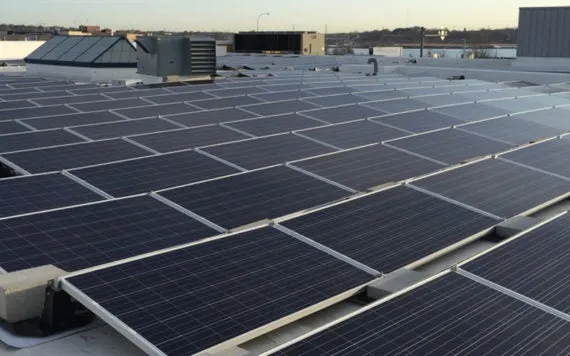Rhode Island is first state to achieve 100% renewables in ten years
- The smallest American state sets the largest clean energy targets.

The solution combines a light-weighted, thin, elastic solar fabric with storage for off-the-grid powering houses and charging EVs. The innovation is meant for industrial, commercial and residential application and supports the United Kingdom’s goal to fully eliminate GHG emission in thirty years.
The organic PV sheets consist of a few layers, the basic one is carbon. The film is non-toxic, it comprises only abundant materials, and its durability is estimated at about twenty years. The fabric is easily bendable and can be glued to surface of different shapes. It is tenfold lighter than conventional framed solar panels – only 1.8 kilo/sq m.
Though the new flexible material has lower lab-tested conversion efficiency than conventional solar devices (13 compared to 15-18 percent), it demonstrates higher stability under natural high temperature conditions (in contrast to traditional panels). Besides, the innovative fabric absorbs a wider range of wavelengths and can harvest light even on dull days.
Energy storage is planned to be performed locally – either in an EV or a flywheel batt, releasing the charge quickly.
The technology has been invented by Jo Parker-Swift. The founder of Solivus Ltd has a degree in biosciences. She got inspired by laurel leaves in her home garden. By measuring the leaf area and analyzing the lines, the scientist has concluded that big surface is a key to absorbing more light. The following R&D has lasted 2.5 years.
The new solution is expected to help minimizing carbon emission and ocean pollution. Solivus’s target to install the solar sheets on major stadiums and commercial buildings over the years 2021-2022 has found support among the firms inclined to reduce their CO2 footprint. The expected capacity of 10 thousand sq meters of the film is 1 megawatt of solar power, which is sufficient to supply electricity to one apartment house.
Also read
- Vattenfall approved to build 254-MW/700-MWh battery at former nuclear site
- GB Energy targets fifteen gigawatts of clean power by 2030
- Vietnam outlines national roadmap to deploy battery storage at scale
- Lodestone Energizes Coromandel’s First Utility-Scale Solar
- Tokyu Switches On Bite-Size Batteries Across Kanto

